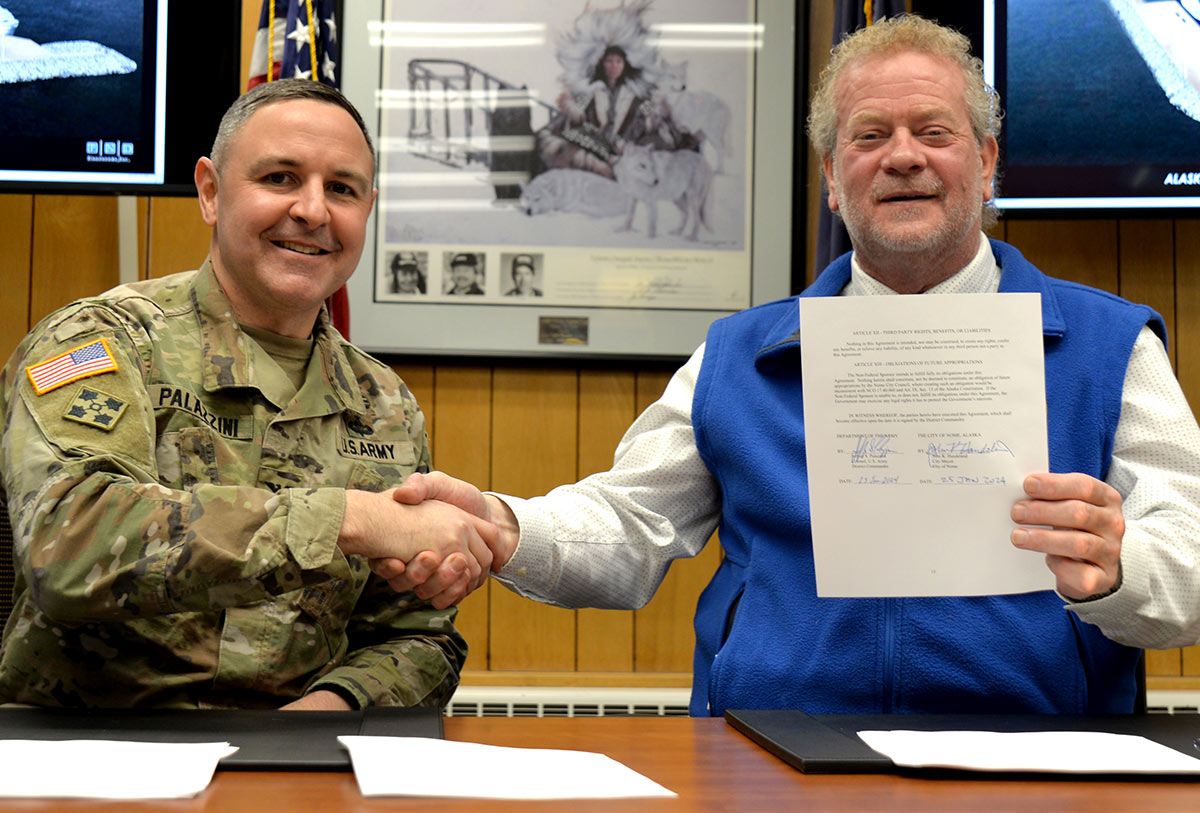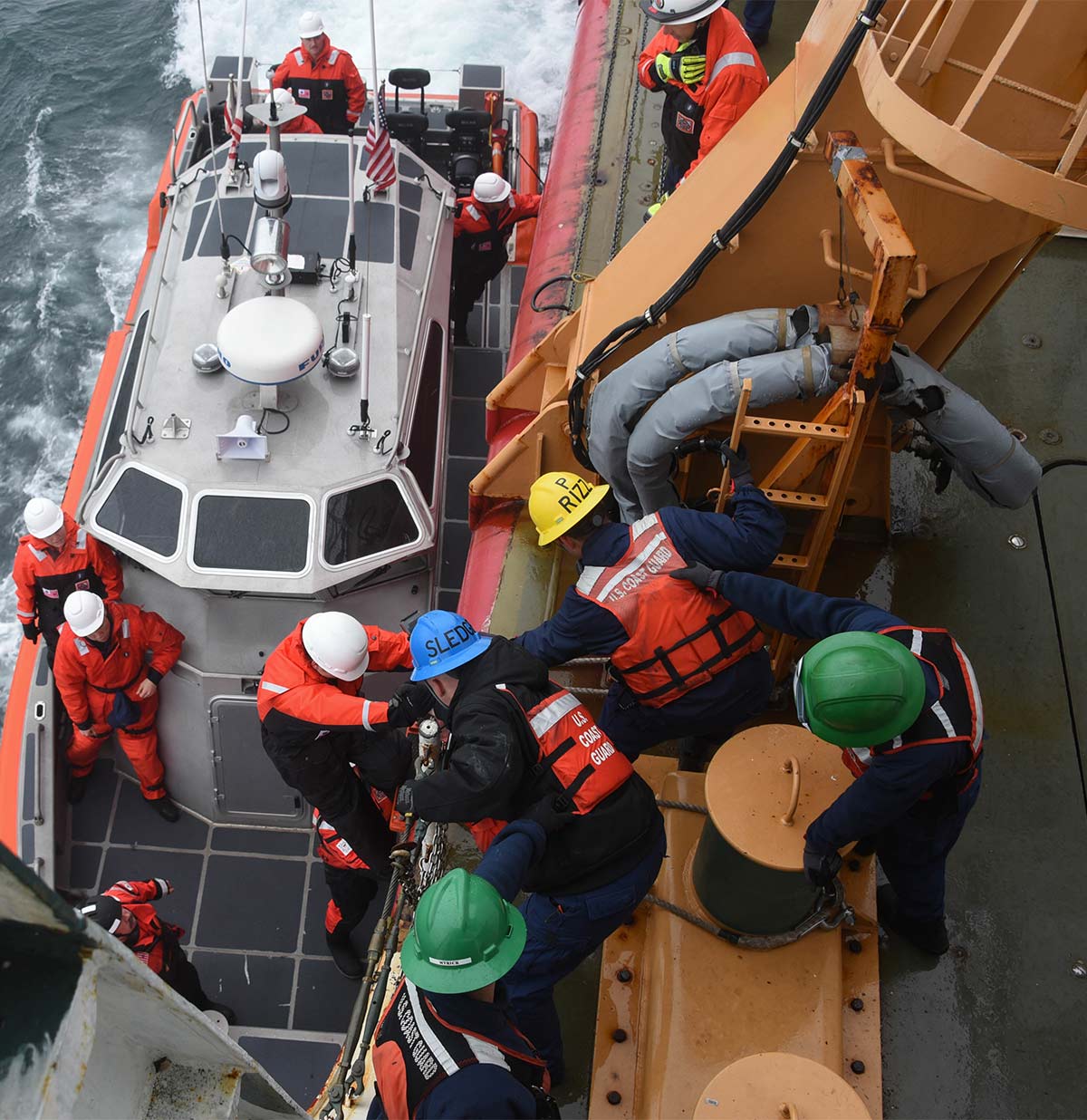Petty Officer 3rd Class Amanda Norcross | DVIDS
pportunity is building in the Arctic. Years of underwater surveys in the Arctic Ocean culminated in December 2023 with an announcement by the US Department of State to claim a wedge of the sea north of Alaska as sovereign territory.
A topographical feature called the Chukchi Borderland, 600 miles north of the Bering Strait, shares a geophysical connection to the outer continental shelf, according to the State Department. Consequently, the United States can claim the territory as its extended continental shelf, asserting rights to conserve and manage the area’s resources and habitats. The extension covers more than 200,000 square miles of the Arctic Ocean.
This strategic move positions Alaska for future developments in the Arctic region. At the doorstep to this new frontier, projects are underway to set up infrastructure for Arctic activities.
For further research at sea, the University of Alaska operates its own vessel. R/V Sikuliaq, a state-of-the-art oceanographic research vessel, is owned by the National Science Foundation for use by the UAF College of Fisheries and Ocean Sciences. Designed and built for Alaska conditions, the vessel is equipped to navigate through frigid, ice-choked waters, conducting essential research in marine ecosystems. The vessel’s capabilities allow scientists to gather critical data inaccessible by other research teams, playing a vital role in expanding understanding of these crucial areas.
R/V Sikuliaq spent the winter in drydock for routine maintenance at its home port in Seward. Beyond a refresher for the vessel, the port itself is due for an upgrade. The Seward Marine Center Research Vessel Infrastructure project is a proposed investment to support the capabilities of R/V Sikuliaq with a new dock for year-round berthing and servicing and a modern warehouse and shop facilities. The UAF Seward Marine Center is awaiting $84 million in funding. These upgrades are considered essential for maintaining and expanding maritime research and supporting efficient operations in the Arctic.
Alaska’s role in this field could also attract international collaborations, positioning the state as a hub for scientific research and dialogue on pressing global environmental issues. This not only enhances Alaska’s academic and scientific prestige but also potentially drives economic growth through research funding, job creation, and technological innovation.
The state’s unique geographic location and expansive, diverse marine ecosystems make it a prime candidate for pioneering advancements in maritime and environmental research. Alaska’s proximity to the Arctic, a region undergoing rapid climatic changes, provides an unparalleled natural laboratory for scientists and researchers. With the anticipated improvements from the Seward Marine Center Research Vessel Infrastructure project, R/V Sikuliaq‘s operational efficiency and research potential could be significantly enhanced, furthering Alaska’s contribution to vital Arctic and marine research.
Seward’s waterfront is also the site of planned construction for the US Coast Guard. Currently, Seward hosts only one Coast Guard vessel, USCGC Mustang, with a crew of twelve. A new class of ship is on the way: the Fast Response Cutter (FRC), which holds a crew of twenty-four. Three of the ships are already in active service in Ketchikan; three more will be based in Sitka, Kodiak, and Seward.
The arrival of the FRC is eagerly anticipated in Seward. Harbormaster Norm Regis highlighted the positive impact of this expansion, noting the influx of crew and their families as a boon to the community. This development paves the way for the Coast Guard’s expanded presence in the Gulf of Alaska and the Arctic.
The US Army Corps of Engineers-Alaska District (USACE) has $250 million to complete the preconstruction, engineering, and design phase as well as the first phase of construction for the Port of Nome Modification. In partnership with the City of Nome, USACE has been designing modifications to alleviate vessel restrictions due to insufficient channel depths and limited harbor space.

John Budnik | DVIDS
“We are on the frontlines of an evolving world, and Alaska is an integral state to the success of our nation,” says Colonel Damon Delarosa, commander of the Alaska District. “These newly allocated funds allow us to continue to build a stronger Alaska through deeds, not words.”
On January 25, the USACE and state of Alaska signed a Project Partnership Announcement, which legally binds the state to execute the Nome port expansion project. According to Nome Mayor John Handeland at the time of the announcement, “Not only is this of great significance for our community and region, and the State of Alaska, it is an historic moment for America. The nation has long needed a deep-water port to allow resupply and refueling services to the country’s national security fleet operating in the Arctic, an area of the globe on which all eyes are focusing, and is rapidly changing. Additionally, the expanded port will enhance support in the transportation of critical goods and fuel throughout the region. Concurrently, it will enhance the ability to protect the marine environment, which is vitally important to our subsistence hunters and fishers as well as the commercial fisheries operating out of Nome.”
The anticipated improvements promise to transform the Port of Nome into a more robust and efficient transportation hub, fundamental to the long-term sustainability of the surrounding communities and enhancing its role in Arctic maritime operations and commerce.
Petty Officer 3rd Class Janessa-Reyanna Warschkow | DVIDS

Building on this air cargo dominance, Alaska is well-placed to extend its influence to marine freight. With the gradual opening of Arctic shipping lanes and Alaska’s extensive coastline, there’s a growing opportunity to replicate its air cargo success in the maritime domain. The potential for marine cargo growth in Alaska could follow the growth of its air cargo operations, especially as global shipping patterns evolve with the changing climate.
Extended sovereignty in the Arctic comes with the added complication of international boundaries. Canada and Russia have each claimed extended continental shelves that encompass the North Pole—yet clearly only one nation can assert control there.
The United States claim does not extend to the pole, but it does lengthen the maritime border with Russia. In addition to the territory claimed by the Chukchi Borderlands, the State Department also delineated a claim in the Bering Sea right up to the imaginary line between US and Russian waters. Alaska’s strategic geographical location and its proximity to the Arctic offer a unique vantage point for monitoring Arctic developments and a potential frontline in the event of polar-region conflicts.
Senior Chief Petty Officer Rachel Polish | DVIDS

This imbalance poses considerable security and logistical challenges for the United States, especially as activity in the region intensifies. The expansion of military capabilities in Alaska could mean enhanced national security, improved surveillance and response capabilities in the Arctic region, and increased presence in a strategically important part of the world. This expanded presence would inevitably lead to benefits for communities throughout the state as military bases and related facilities expand and modernize to meet new strategic demands.
As Alaska stands at the cusp of a new era, marked by a blend of unprecedented opportunities and formidable challenges, the path ahead is as rich with potential as it is fraught with complexity. The state’s strategic position in the Arctic opens doors to myriad possibilities, from maritime and environmental research to military expansion. However, the journey is not without its hurdles, including legislative constraints, environmental uncertainties, and economic considerations. The balance Alaska strikes between seizing these opportunities and navigating the obstacles will define its role on the global stage in the years to come.